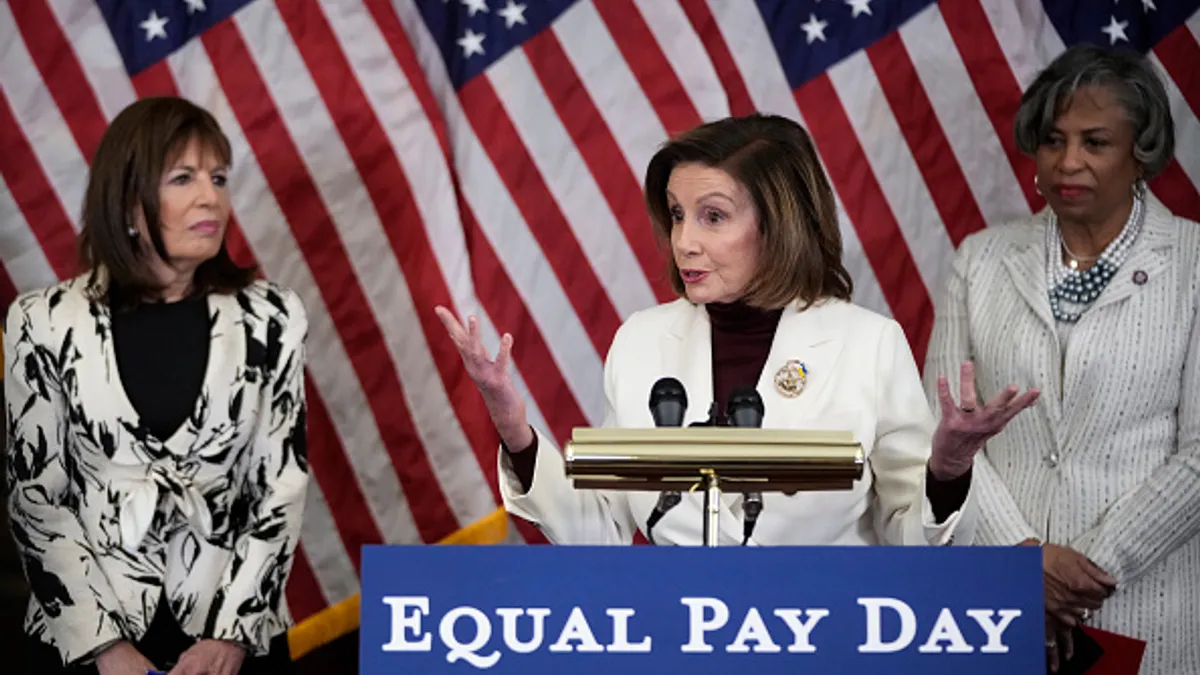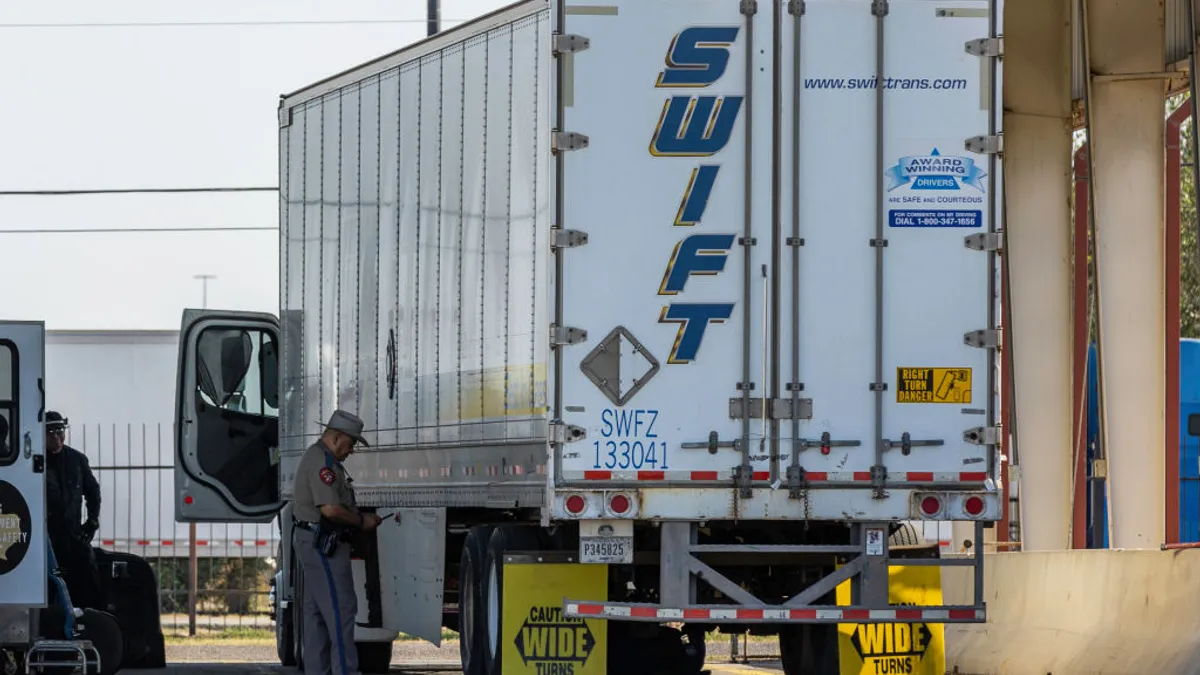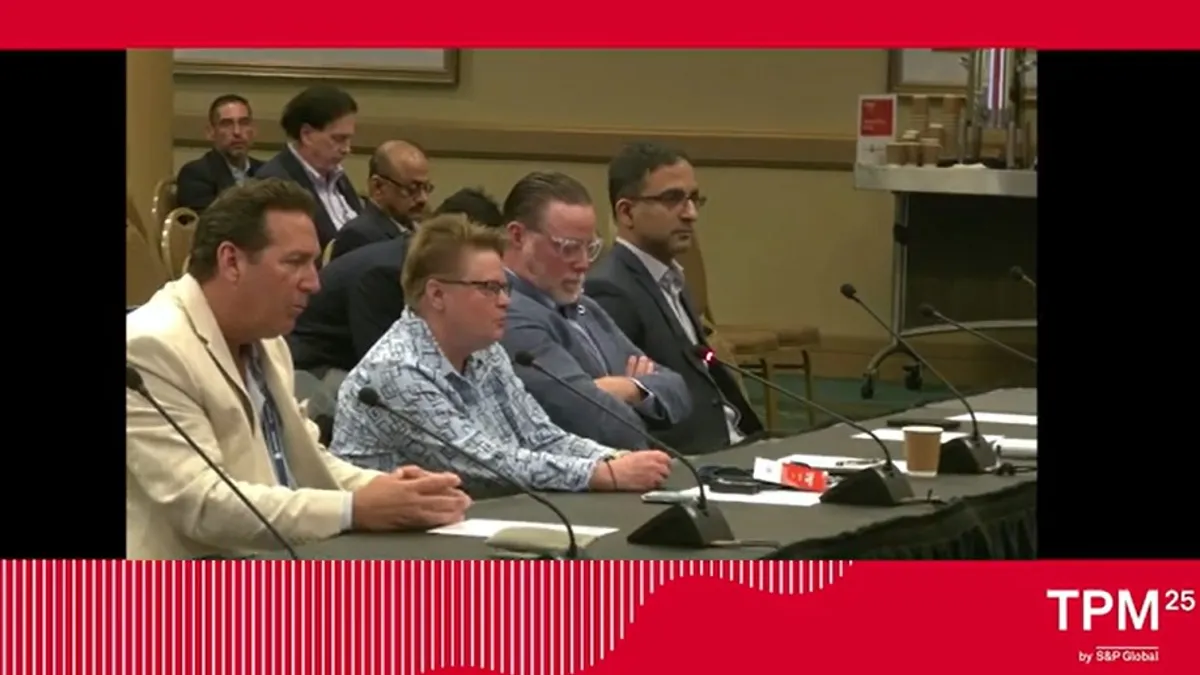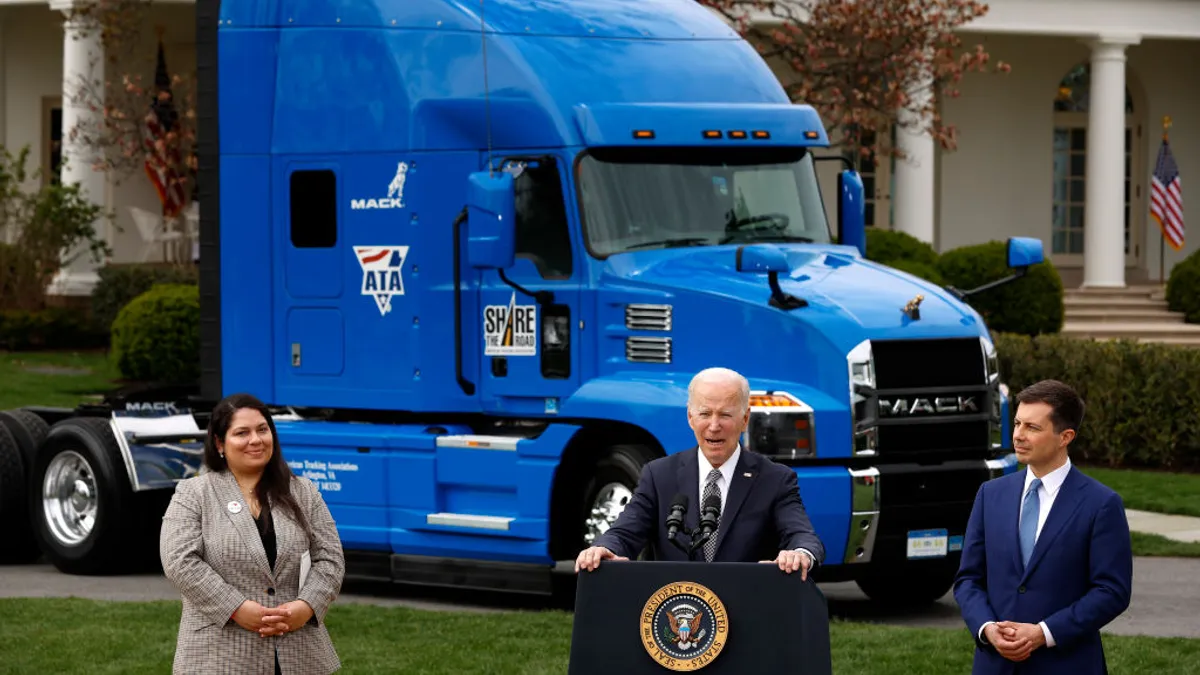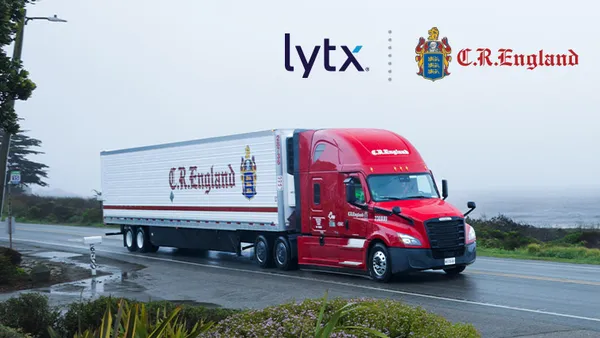The driver shortage is top of mind for executives of the largest publicly traded trucking firms. Though some trucking associations call the issue a "myth," fleets did report trouble recruiting drivers onto payrolls.
Q2 this year has been an extension of the driver issues fleets experienced in Q1. But Werner CEO Derek Leathers said during his company's last earnings call that recruiting and retention "became more challenging" during Q2.
Freight demand continues to surge, and as peak season arrives, the hiring push has come even more into focus. Fleet executives minced few words when describing the situation to investors and analysts on their Q2 earnings calls.
Who said what: Leadership talks labor
Leathers: "High-quality drivers are increasingly harder to find and retain, with intense competition from other carriers in industries that are labor constrained ... The driver shortage is as severe as I have ever seen. Traditional industry headwinds remain, including aging demographics in recruiting for the trucking life."

Yellow CEO Darren Hawkins: "We are still short on the over the road drivers, and we are using purchased transportation in lanes that we would rather not."
J.B. Hunt COO Nicks Hobbs: "We believe the availability of labor is having a meaningful impact across almost every part of the supply chain, ranging from the ports to rail terminal operations, warehouse operations, and, certainly, over-the-road driver market."
J.B. Hunt Executive Vice President of Intermodal Darren Field: "At this point, there is [no] let up on challenges for recruiting and hiring and retaining drivers. There is no let up on the cost to outsource capacity, our need to secure capacity in order to dray loads out of the terminal. So, all of those cost challenges are real."
Knight-Swift: "Sourcing and retaining drivers will remain challenging and lead to additional driver wage inflation ... Miles per truck will remain pressured by the driver shortage."
U.S. Xpress CEO Eric Fuller: "The driver situation has progressively gotten worse in some of our dedicated accounts. Unfortunately, a portion of our dedicated operation are in, what I call, less attractive markets or types of operations. And so it's been a little more difficult to source driver capacity in those different as of accounts."

U.S. Xpress CFO Eric Peterson: "Recruiting costs increased approximately $3.5 million due to the tight driver market. These factors more than offset a continuation of our multi-quarter trend of lower insurance and claims expense despite higher premiums."
Schneider CEO Mark Rourke: "[Where] we're trying to focus is on the capacity — the driver side of that equation — particularly on the network side ... which is part of the reason to broaden our reach into the non-CDL driver pool."
Hub Group CEO David Yeager: "The driver shortage is a key issue fueling the growth in intermodal and we believe it's here to stay ... This challenge is exacerbated by the structural shortage we face due to a lack of new entrants into the driver workforce and an increasingly aging population of drivers. New drivers will have options and will choose to be home daily, drive new equipment, while earning a strong wage. These are all benefits that drivers in intermodal receive versus driving for over-the-road motor carrier."
USA Truck CEO James Reed: "Driver availability remains a challenge and there is no relief in sight in terms of new driver capacity in the marketplace."
Attempting to remedy the tight labor market
While trucking companies were similarly hampered by the recruitment environment, executives described leaning on varying solutions. Some turned to compensation tactics, while others focused on looking outside the company for capacity.
Increase pay to recruit, retain
One of the most popular recruitment tactics across the industry is making wages more competitive.
Cowan Systems is giving some new recruits the chance to earn up to $20,000 in incentives. USA Truck implemented a pay increase in May, which contributed to a 14.7% YoY increase in driver wages, Reed said.
Wage increases are also a tactic for retention, which becomes even more important in a labor-constrained market. Werner upped company driver pay per mile by nearly 11% YoY in its TL segment, Leathers said.
USA Truck raised wages but also focused on soliciting and acting on driver feedback using technology. The company touted its driver retention in its most recent earnings call, which Reed said "was fantastic again in the quarter; better than industry averages."
Fuel the driver pipeline
Schneider reopened several training schools, which would help by "priming the new-CDL-driver pump," Rourke said, adding that the benefits of doing so would begin to roll in mid-Q3. Schneider has several new academies for non-CDL-holders, which primarily feeds certain dedicated configurations, Rourke said.
"To stand up with instructors and process, and change your recruiting profile a bit to be more accepting of that type of profile, takes some adjustments," he said. It's not the silver bullet to the labor issues, he added, but it's a tactic "that will give us access to some of the capacity that we have not been tapping into, really since about 2009. It's been that long since we've started up our academies in a meaningful way like we're talking about here."
In Yellow's Q2 call, President Darrel Harris said the site expansion of the company's driver academy was "well underway." Harris said Yellow has 16 fixed locations across the U.S., plus "mobile academies that can support targeted hiring efforts." Applicants to the academy more than doubled in Q2, he said.
Werner also expanded its school network from 13 to 16 locations. At the end of next March, Leathers said Werner aims to have 22 locations.
Work with owner-operators
The lack of company drivers prompted firms to lean on purchased transportation, a model with which Landstar has found success.
In Q2, Landstar recruited 10% more owner-operators — which it refers to as business capacity owners, or BCOs — than it did in the same Q2 2020, CEO Jim Gattoni said on the company's last earnings call. Retention also increased, with the number of BCO cancellations dropping 3% in Q2 YoY, he said.
"I think, we would be remiss to say we don't have to work pretty hard to get the BCOs in the door. But I think the environment and where things are and the network ... that we provide them makes it pretty attractive location for them," Landstar Vice President and Chief Safety and Operations Officer Joe Beacom said on the call.
"To stand up with instructors and process, and change your recruiting profile a bit to be more accepting of that type of profile, takes some adjustments."

Mark Rourke
CEO of Schneider
USA Truck began programs catering more to owner-operators. It operationalized its truck-leasing company and redeployed more than 20 trucks into an owner-operator lease configuration and had more than 100 owner-operators waiting to access the program, Reed said.
The company also recently signed onto a program that leases trucks to a U.S.-based owner-operator who employs drivers on B-1 visas, Reed said. USA Truck planned to ramp up the program in Q3, with the expectation of creating additional capacity.
As for when the constrained driver market will improve and take pressure off of margins, trucking officials found it hard to pinpoint a future date.
"It is difficult ... to predict all the way out into 2022 at this point, with so many unknowns," Leathers said. "It's difficult to fight for trucks, fight for drivers and fight to overcome some of the COVID hesitancy that still exists out there. And so, it's just too early to say that about 2022."







